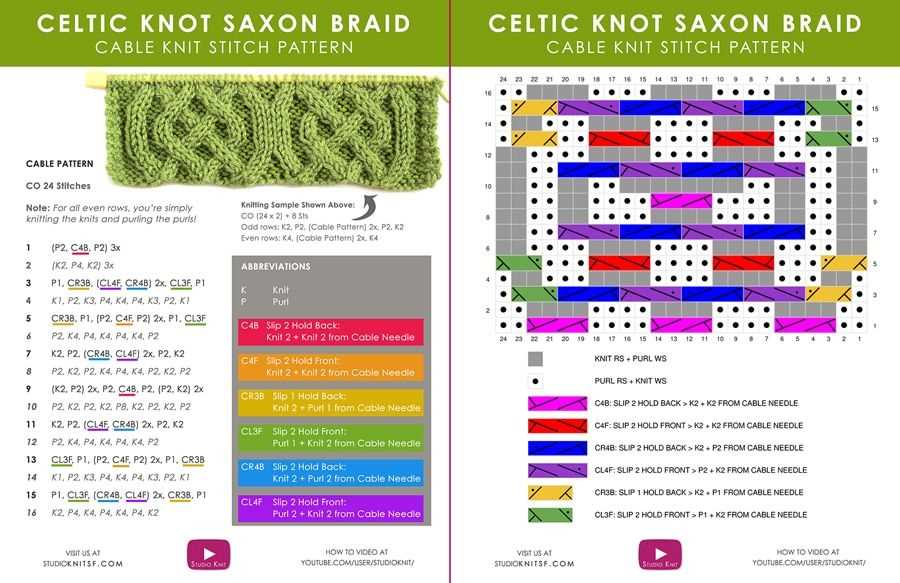
Knitting is not only a practical skill but also a creative outlet. If you’re a knitter looking for a new challenge, you may want to try your hand at mastering the art of Celtic knot knitting patterns. These intricate designs are inspired by Celtic art and symbolism, and they can add a touch of elegance and mystique to your knitting projects.
Celtic knot patterns are characterized by their intricate and continuous design, with no clear beginning or end. They often consist of interwoven lines and loops that create beautiful and complex patterns. The knots are thought to represent infinity, eternity, and the interconnectedness of all things. Knitting a Celtic knot pattern can be a meditative process, as you follow the twisting and turning lines and create something truly unique.
To knit a Celtic knot pattern, you’ll need a good understanding of basic knitting techniques, such as casting on, knitting, purling, and decreasing. You’ll also need to be comfortable reading knitting charts, as Celtic knot patterns are often charted rather than written out in words. Once you have the skills and knowledge required, you can start experimenting with different Celtic knot patterns and incorporate them into your knitting projects.
Whether you choose to knit a Celtic knot pattern into a scarf, hat, or even a blanket, your finished piece is sure to be a showstopper. The intricate and timeless design of Celtic knots makes them versatile and suitable for a wide range of knitting projects. So, grab your knitting needles, choose a Celtic knot pattern that speaks to you, and let your creativity and skills shine through in your knitting.
Celtic Knot Knitting Pattern
If you’re looking to add a touch of Celtic heritage to your knitting projects, incorporating a Celtic knot knitting pattern is a perfect way to do so. Celtic knots are intricate designs that represent eternal love and interconnectedness. They have been used in Celtic art and culture for centuries, and now you can bring this beautiful symbolism into your knitting creations.
Creating Celtic Knot Patterns
There are various ways to incorporate Celtic knot patterns into your knitting projects. One of the most common methods is by using cables. Cables are created by crossing stitches over each other to form interlocking designs. By combining different cable stitches, you can create unique Celtic knots.
Another way to create Celtic knot patterns is by using lace knitting techniques. Lace knitting involves creating openwork designs by increasing and decreasing stitches. By strategically placing these increases and decreases, you can create intricate Celtic knot motifs.
Choosing the Right Yarn and Needles
When knitting Celtic knot patterns, it’s important to choose the right yarn and needles to ensure that the details of the design show up. Opt for a yarn with good stitch definition, such as a smooth wool or cotton blend. This will enhance the visibility of the intricate knotwork.
For needles, consider using a pair with pointed tips to help navigate through the twists and turns of the Celtic knot pattern. Circular needles may also be helpful for larger projects.
Free Celtic Knot Knitting Patterns
If you’re new to Celtic knot knitting patterns or just looking for some inspiration, there are many free patterns available online. These patterns will provide you with step-by-step instructions on how to create various Celtic knot designs, from simple to complex.
- Celtic Cable Neck Warmer: This pattern features a Celtic knot motif in the center of a cozy neck warmer. It’s a great project for practicing cable knitting techniques.
- Celtic Knot Dishcloth: This pattern incorporates a small Celtic knot design in the corner of a dishcloth. It’s a quick and easy way to add a touch of Celtic charm to your kitchen.
- Celtic Knot Headband: This pattern creates a stylish headband with a Celtic knot detail. It’s a fun accessory to wear and showcases your knitting skills.
Overall, incorporating Celtic knot knitting patterns into your projects allows you to create unique and meaningful pieces. Whether you choose to use cables or lace techniques, these patterns are sure to add a touch of Celtic charm to your knitting creations.
What are Celtic Knot Knitting Patterns?
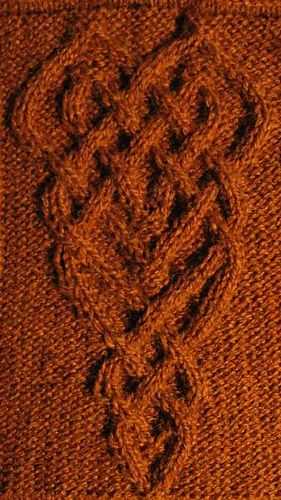
Celtic knot knitting patterns are intricate designs that are created by interlacing and intertwining yarn in a specific way to form a knot-like pattern. These patterns originated from the Celtic culture, which dates back thousands of years and is known for its rich and intricate art. Celtic knot knitting patterns are often used to create unique and beautiful accessories such as scarves, shawls, and blankets.
When knitting a Celtic knot pattern, knitters use various stitches and techniques to create the illusion of interlacing and weaving. The pattern often consists of repeating motifs that are connected in a way that gives the appearance of an endless knot. Some common motifs used in Celtic knot knitting patterns include crosses, spirals, and braids.
Creating a Celtic knot knitting pattern requires skill and attention to detail. Knitters must carefully follow the instructions provided in the pattern, as even a small mistake can disrupt the flow of the design. It is important to maintain an even tension and uniform stitch size throughout the project to achieve the desired results.
Some knitters prefer to work with charts or diagrams when knitting Celtic knot patterns, as they can provide a visual representation of how the knots should be formed. These charts often use symbols to represent different stitches and indicate the direction of the yarn, making it easier to follow along.
Celtic knot knitting patterns can be challenging for beginners, but with practice and patience, anyone can create stunning pieces of knitted art. They offer a unique opportunity to showcase creativity and showcase the intricate beauty of Celtic design.
History of Celtic Knot Knitting
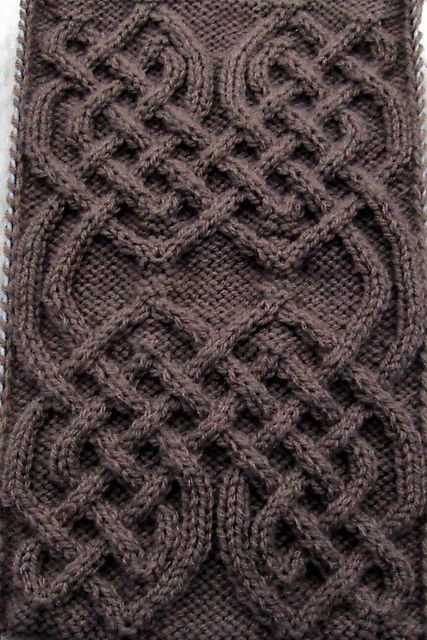
Celtic knot knitting is a traditional form of knitting that originated in the Celtic regions of Ireland, Scotland, and Wales. The art of creating intricate Celtic knot patterns using knitting needles and yarn has been passed down through generations, with each pattern holding its own unique meaning and symbolism.
The roots of Celtic knot knitting can be traced back to the ancient Celts, who inhabited these regions thousands of years ago. The Celts were known for their distinctive artwork and craftsmanship, and knitting was an essential part of their daily lives. They would create intricate patterns using various techniques, including knotwork, which symbolized the interconnectedness of all things.
The art of Celtic knot knitting was traditionally passed down from mother to daughter, often taught within families as a way to preserve Celtic traditions and cultural heritage. The patterns were kept secret and held deep meaning within families, representing different aspects of life, nature, and spirituality.
Over time, Celtic knot knitting patterns have evolved and adapted to different styles and variations. Today, they are not only cherished for their beauty but also celebrated as a way to connect with Celtic heritage and express individual creativity. With the rise of the internet and online communities, knitters from all over the world have come together to share and learn Celtic knot knitting techniques, keeping the tradition alive and thriving.
Whether knitting a simple Celtic knot pattern or tackling a more complex design, the practice of Celtic knot knitting allows individuals to immerse themselves in the rich history and symbolism of Celtic culture. It is a way to pay homage to the ancient Celts and keep their traditions alive for future generations to enjoy.
Popular Celtic Knot Knitting Designs
Knitting Celtic knot patterns has become increasingly popular among knitting enthusiasts. Celtic knots are beautiful and intricate patterns that have been used in Celtic art for centuries. They are known for their interwoven designs and symbolism, often representing eternal life or the interconnection of nature and spirituality. Knitting Celtic knot designs allows crafters to create their own pieces of Celtic-inspired art and wearables.
One popular Celtic knot knitting design is the Trinity knot. The Trinity knot is a traditional Celtic symbol, also known as the Triquetra, that represents the threefold nature of existence – mind, body, and spirit. Knitting the Trinity knot pattern can be a challenging but rewarding experience, as it requires careful attention to detail and precision. The resulting finished piece, whether it’s a scarf, hat, or blanket, will showcase the timeless beauty of the Celtic knot.
The Claddagh Knot
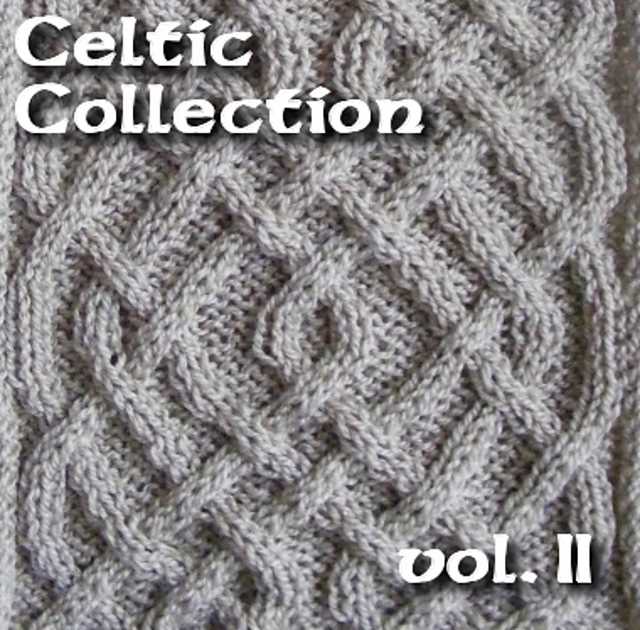
Another popular Celtic knot knitting design is the Claddagh knot. The Claddagh is a traditional Irish symbol that represents love, loyalty, and friendship. The design features two hands holding a heart, with a crown atop it. Knitting a Claddagh knot pattern can be a meaningful and heartfelt gift for a loved one, as it embodies the essence of the Claddagh symbol. This design can be incorporated into various knitting projects, such as sweaters, gloves, or even home decor items like cushions or blankets.
The Celtic Tree of Life
The Celtic Tree of Life is another popular motif in Celtic knot knitting designs. It symbolizes the connection between heaven and earth, and the eternal cycle of life. Knitting the Celtic Tree of Life pattern can be a meditative and spiritual experience, as it allows the crafter to reflect on the interconnectedness of all living things. This design can be incorporated into various knitted items, such as shawls, socks, or even wall hangings.
- Overall, knitting Celtic knot designs offers crafters a way to connect with the rich Celtic heritage and express their creativity.
- Whether you’re a beginner or an experienced knitter, there are Celtic knot patterns available for all skill levels.
- By carefully following the intricate patterns and using various knitting techniques, you can create unique and beautiful Celtic-inspired pieces.
- Knitting Celtic knot designs not only produces stunning wearable art but also allows you to immerse yourself in the beautiful symbolism and history behind these ancient Celtic patterns.
Tips for Knitting Celtic Knot Patterns
Knitting Celtic knot patterns can be a fun and challenging project for experienced knitters. These intricate designs are inspired by ancient Celtic art and symbolism, and they can add a beautiful and unique touch to any knitted item. Here are some tips to help you master the art of knitting Celtic knot patterns.
1. Choose the right yarn
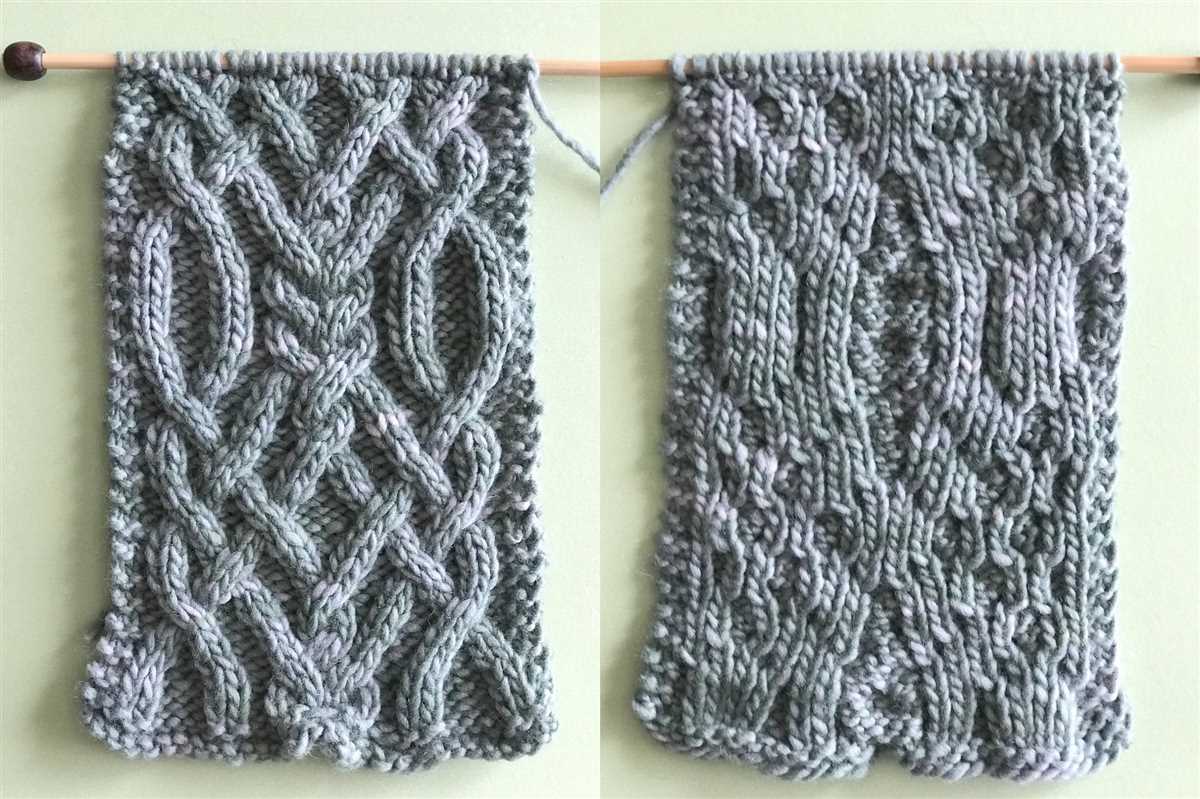
When knitting Celtic knot patterns, it’s important to choose a yarn that is suitable for this type of design. Look for a yarn that has good stitch definition and is not too slippery, as this will make it easier to create the intricate twists and turns of the knots. A wool or wool-blend yarn would be a good choice, as it has a nice balance of stretch and durability.
2. Use stitch markers
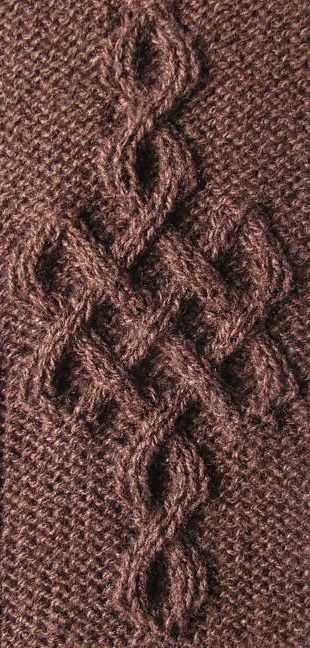
Keeping track of your stitches is crucial when knitting Celtic knot patterns. To make it easier, use stitch markers to indicate different sections of the pattern. This will help you stay organized and ensure that your knots are properly aligned. Place a stitch marker at the beginning and end of each knot repeat, and move them up as you work through the pattern.
3. Pay attention to tension
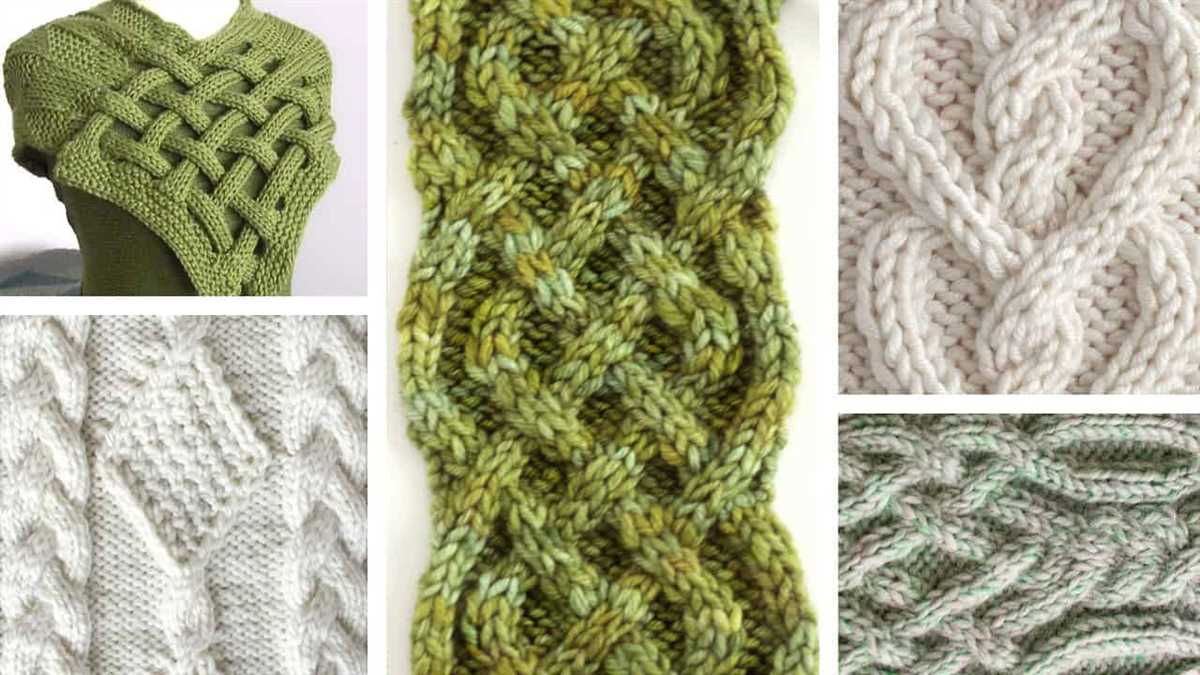
Because Celtic knot patterns often involve intricate cabling and crossing of stitches, it’s important to pay attention to your tension. Make sure your stitches are not too loose or too tight, as this can affect the overall look of the pattern. Take your time and adjust your tension as needed to ensure that the knots are clearly defined and the pattern looks crisp and neat.
4. Take advantage of charts
Many Celtic knot patterns are best understood and followed using charts. These visual representations of the pattern show the twists and turns of the knots and make it easier to keep track of your place. If you’re new to knitting with charts, take some time to familiarize yourself with the symbols and how they correspond to different stitches. Once you get the hang of it, knitting from charts can be a great way to create intricate Celtic knot patterns.
5. Practice and patience
Knitting Celtic knot patterns can be challenging, especially if you’re new to cabling or working with complex stitch patterns. It’s important to have patience and give yourself time to practice and master the techniques involved. Start with simpler knot patterns and gradually work your way up to more complex designs. With practice, you’ll become more comfortable with the techniques and be able to create beautiful Celtic knot patterns.
- Choose the right yarn
- Use stitch markers
- Pay attention to tension
- Take advantage of charts
- Practice and patience
Choosing Yarn and Needles for Celtic Knot Knitting
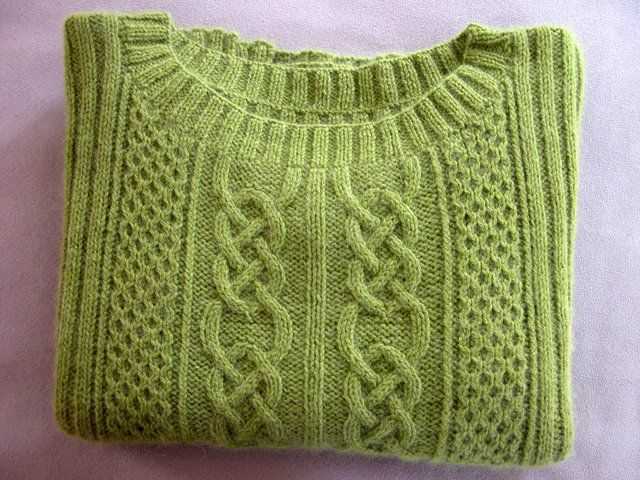
When it comes to knitting Celtic knot patterns, selecting the right yarn and needles is essential to achieve the desired results. The choice of yarn can greatly affect the appearance and drape of the finished project, while the needles determine the tension and stitch definition.
Yarn: It is recommended to choose a yarn that is smooth and has good stitch definition. This will help showcase the intricate details of the Celtic knot pattern. Opting for a solid or semi-solid color is also advisable, as it allows the knots to stand out more prominently. Worsted weight yarn is a popular choice for knitting Celtic knot patterns, as it provides a good balance between stitch definition and ease of knitting.
Needles: The choice of needles depends on the yarn and personal knitting style. For Celtic knot knitting, circular needles are often preferred as they can better handle the increasing number of stitches in the pattern. The length of the circular needles should be long enough to accommodate the width of the project, allowing the stitches to be comfortably held on the needles. The size of the needles should correspond to the recommended gauge of the yarn, ensuring that the stitches are not too loose or too tight.
In addition to the yarn and needles, it is also important to consider the desired size and drape of the finished project. If a more delicate and airy look is preferred, finer yarn and smaller needles can be chosen. On the other hand, if a more substantial and dense fabric is desired, heavier yarn and larger needles can be used. Experimenting with different yarns and needle sizes can help achieve the desired effect and create unique variations of Celtic knot knitting patterns.
Step-by-Step Guide to Knitting a Celtic Knot Pattern
Knitting a Celtic knot pattern can be a fun and challenging project for experienced knitters. This intricate design is characterized by its interwoven lines and loops, creating a beautiful and unique motif. Follow this step-by-step guide to learn how to create your own Celtic knot pattern.
1. Choose the Right Yarn and Needles
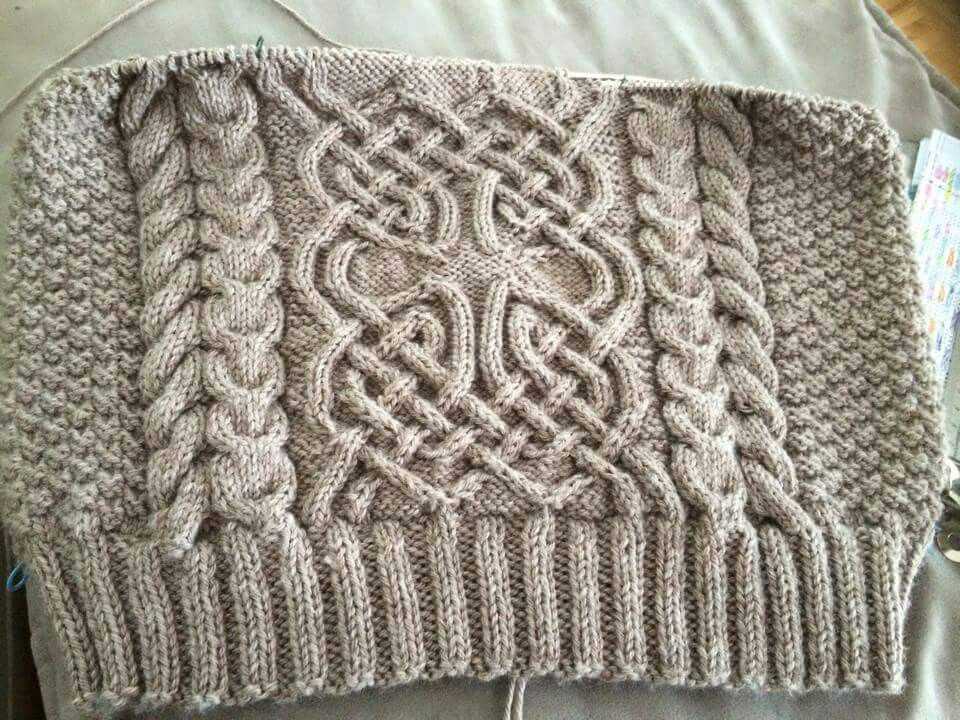
Start by selecting the appropriate yarn and needles for your project. A medium-weight yarn is usually a good choice for Celtic knot patterns, as it provides enough definition without being too bulky. Choose a pair of knitting needles that match the recommended needle size for your yarn.
2. Understand the Pattern Chart
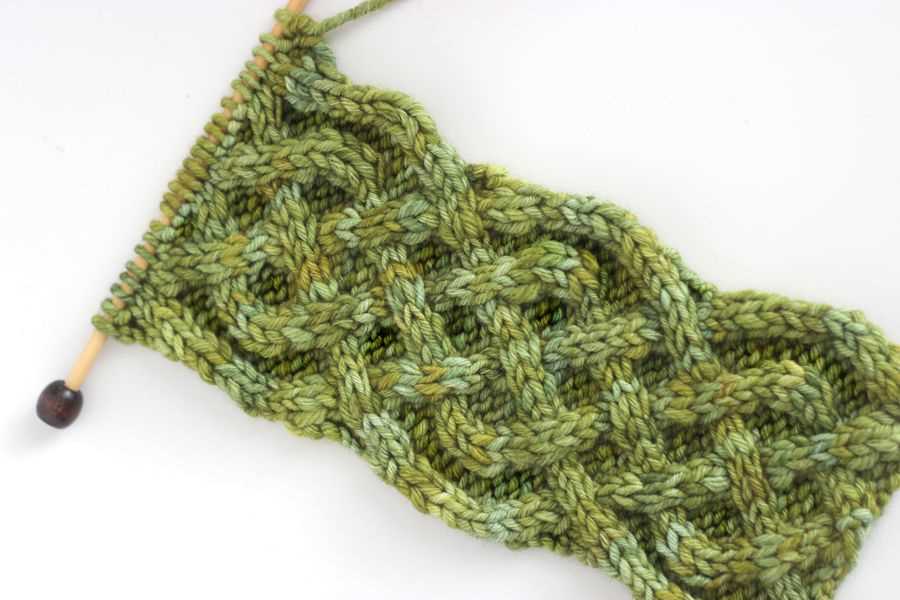
Celtic knot patterns are typically represented in chart form, which consists of symbols and lines that indicate each stitch. Take the time to study and understand the pattern chart before you begin knitting. Pay close attention to the symbols and their corresponding stitches.
3. Start with a Base Row
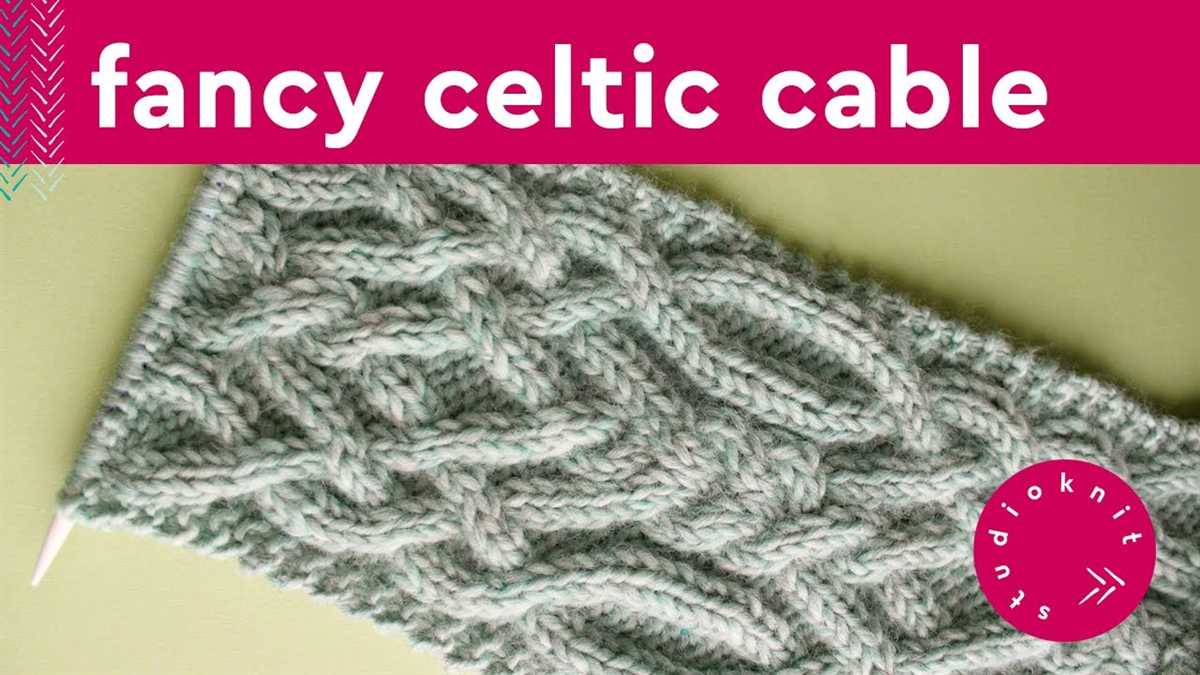
To begin knitting the Celtic knot pattern, you’ll need to establish a base row. This row will serve as the foundation for the following rows of the pattern. Follow the instructions in the pattern chart to create the base row, ensuring that you accurately interpret each symbol.
4. Begin the Knotting Process
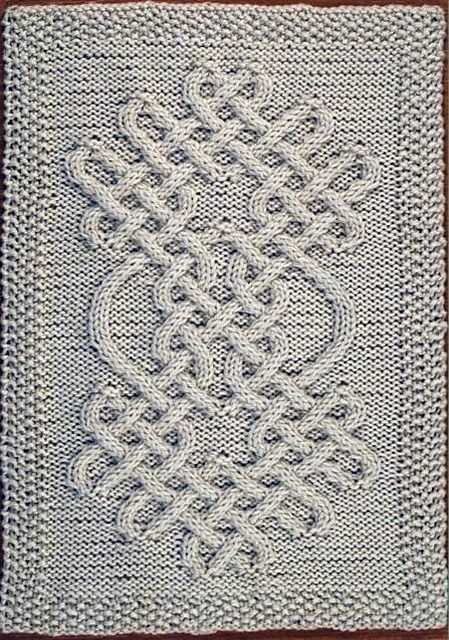
Once the base row is complete, you can start the knotting process. The pattern chart will indicate where to start and how to create each knot. Pay attention to the direction of the lines and the order in which the stitches are worked. Use stitch markers to help you keep track of your progress.
5. Repeat and Rotate
Celtic knot patterns often involve repeating and rotating sections of the design. This creates the intricate interwoven effect that is characteristic of Celtic knots. Follow the pattern chart to repeat and rotate the necessary sections, always working with the correct stitch count and direction.
6. Finishing Touches
Once you have completed the Celtic knot pattern, it’s time to finish off your project. Follow the pattern instructions for any necessary finishing touches, such as binding off or weaving in ends. Give your finished piece a gentle blocking to enhance the overall appearance and shape of the Celtic knot pattern.
Knitting a Celtic knot pattern requires concentration and attention to detail, but the end result is well worth the effort. Enjoy the process of creating this intricate design and take pride in your finished project!
Common Mistakes to Avoid When Knitting Celtic Knots
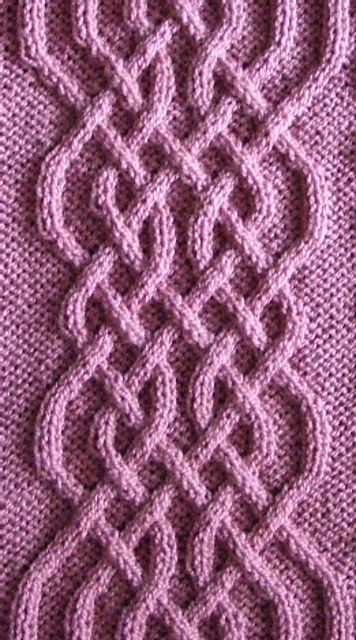
Knitting Celtic knots can be a fun and challenging project, but it’s important to be aware of common mistakes that can occur. By avoiding these mistakes, you can ensure that your knitting project turns out beautifully.
1. Choosing the Wrong Yarn:
One of the most common mistakes when knitting Celtic knots is choosing the wrong yarn. It’s important to select a yarn that is suitable for the type of pattern and stitch you will be using. Using a yarn that is too thick or too thin can result in an uneven and messy-looking knot. Take the time to carefully choose a yarn that is appropriate for your project.
2. Not Keeping Track of the Pattern:
Knitting Celtic knots often involves intricate patterns and stitches. It’s crucial to keep track of the pattern as you knit to avoid mistakes. Using a row counter, stitch markers, or even a pen and paper can help you keep track of where you are in the pattern. Losing your place can lead to incorrect stitches and an overall messy-looking knot.
3. Not Paying Attention to Tension:
Another mistake to avoid is not paying attention to tension. The tension of your stitches can greatly affect the appearance of your Celtic knot. If your tension is too loose, the knot may appear stretched out and uneven. On the other hand, if your tension is too tight, the knot may appear bunched up and distorted. Take the time to practice and adjust your tension as needed to achieve the desired result.
4. Skipping Blocking:
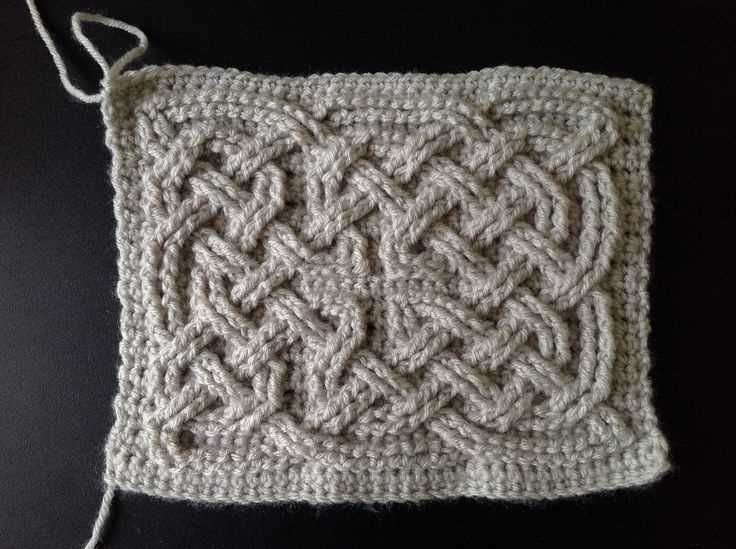
Blocking is an important step in knitting Celtic knots. It helps to even out the stitches and shape the knot into its final form. Skipping this step can result in a knot that looks messy and unfinished. Take the time to properly block your project, following the instructions for your specific yarn and pattern. This will ensure that your knot looks polished and professional.
5. Rushing the Process:
Knitting Celtic knots requires patience and attention to detail. Rushing through the process can lead to mistakes and frustrations. Take your time with each stitch and carefully follow the pattern instructions. This will help you create a beautiful Celtic knot that you can be proud of.
Avoiding these common mistakes can greatly improve the outcome of your knitting project. By choosing the right yarn, keeping track of the pattern, paying attention to tension, blocking properly, and taking your time, you can create stunning Celtic knots that showcase your knitting skills and creativity.
Adding Variations and Embellishments to Celtic Knot Designs
In the world of Celtic knot knitting patterns, there are endless possibilities for adding variations and embellishments to create unique and personalized designs. By incorporating different stitch patterns, colors, and textures, you can bring new life to traditional Celtic knot designs.
One way to add variation to your Celtic knot design is by experimenting with different stitch patterns. Try using lace stitches to create an open and delicate look, or cable stitches to add depth and texture. You can also incorporate different types of stitches, such as bobbles or popcorn stitches, to create interesting focal points within the knot.
Adding color to your Celtic knot design is another great way to make it stand out. Consider using multiple colors to create a vibrant and eye-catching design, or opt for monochromatic tones to add a subtle and sophisticated touch. You can also experiment with different yarn types, such as variegated or self-striping yarn, to create a unique and ever-changing color pattern.
Embellishments can also play a significant role in enhancing your Celtic knot design. Adding beads, sequins, or embroidery can create stunning and intricate details within the knot. You can use beads to highlight certain parts of the design, or embroider flowers or vines to bring a touch of nature to your knitting.
Overall, the key to adding variations and embellishments to Celtic knot designs is to experiment and let your creativity flow. Don’t be afraid to try new stitch patterns, colors, or embellishments. The possibilities are endless, and the result will be a truly one-of-a-kind piece that showcases your knitting skills and personal style.
Using Celtic Knot Knitting Patterns for Home Decor
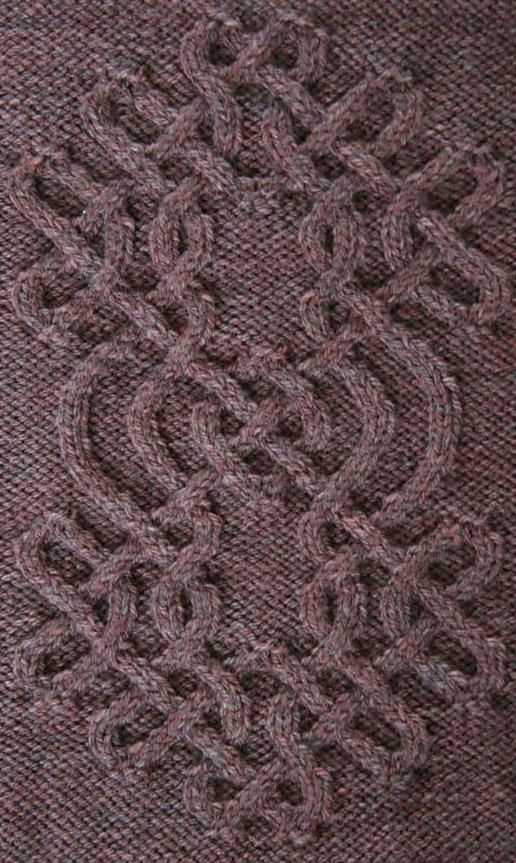
Knitting is not only a craft that keeps your hands busy and your mind focused, but it can also be a beautiful way to decorate your home. One of the most intricate and visually stunning techniques is Celtic knot knitting patterns. These patterns are characterized by their interwoven and interlocking designs, representing the timeless beauty of Celtic culture and art.
The versatility of Celtic knot knitting patterns allows you to incorporate them into various home decor items, adding a touch of elegance and uniqueness to your living space.
Throws and blankets: One of the most popular ways to use Celtic knot knitting patterns in home decor is by creating stunning throws and blankets. A knitted throw with intricate Celtic knot patterns can instantly elevate the look of your living room or bedroom. The complex and intertwining designs create a sense of sophistication and can be a focal point in any room.
Pillows and cushions: Adding Celtic knot knitting patterns to your pillows and cushions is another way to infuse your home with Celtic charm. Whether you choose to knit a single knot on each pillow or create a more elaborate pattern, these unique designs will make your pillows stand out. They will not only provide comfort but also add a touch of cultural elegance to your home.
Wall hangings and tapestries: If you are looking for a statement piece for your walls, consider creating a Celtic knot knitting pattern wall hanging or tapestry. The intricate patterns and interwoven designs will add depth and visual interest to any room. You can choose to frame your knitting or hang it freely, allowing the knots to be showcased in all their glory.
Table runners and placemats: Another way to incorporate Celtic knot knitting patterns into your home decor is by using them for table runners and placemats. Knitting a table runner with these intricate patterns will instantly transform your dining area and create an inviting atmosphere. Placemats with Celtic knots can bring a touch of elegance to your table settings and make your meals feel more special.
Rugs and doormats: If you want to make a bold statement at your entryway or in any part of your home, consider knitting a rug or doormat with Celtic knot designs. The durability and uniqueness of these patterns will make any space feel warm and welcoming. Guests will be impressed by the attention to detail and the cultural significance of the Celtic knot motif.
Overall, using Celtic knot knitting patterns in your home decor allows you to showcase your creativity, passion for knitting, and appreciation for Celtic art. Whether you choose to knit throws, pillows, wall hangings, table runners, or rugs, incorporating these intricate designs will undoubtedly add a touch of elegance and charm to your living space.
Creating Celtic Knot Knitting Patterns for Accessories
Knitting Celtic Knot patterns can add an intricate and elegant touch to any accessory. Whether you are knitting scarves, shawls, or even hats, incorporating Celtic Knot elements can transform simple designs into stunning pieces of art. The beauty of Celtic Knot patterns lies in their interwoven and continuous nature, symbolizing eternal life and never-ending love.
When creating Celtic Knot knitting patterns for accessories, it is essential to understand the underlying structure of the knots. Celtic Knots are made up of interlocking loops and curves, often forming diamond-like shapes. The patterns can be simple or complex, depending on the desired effect. Breaking down the knots into smaller elements can help in designing unique and personalized patterns.
Here are a few steps to follow when creating Celtic Knot knitting patterns for accessories:
- Choose a base pattern: Start with a basic knit or purl pattern as the foundation for your Celtic Knot design. This could be a simple ribbing or moss stitch that will serve as the background for the knot.
- Research Celtic Knot symbols: Familiarize yourself with different Celtic Knot symbols and their meanings. This will help you choose the right knot patterns to incorporate into your design, depending on the message or symbolism you want to convey.
- Create a chart or diagram: Use graph paper or a knitting chart software to sketch out your Celtic Knot pattern. This will help you visualize how the knots will be incorporated into the accessory and ensure that the design flows smoothly. Each square on the chart represents a stitch or a group of stitches.
- Start knitting: Follow the chart or diagram to knit the Celtic Knot pattern onto your accessory. Pay attention to stitch counts and any necessary pattern repeats to maintain the integrity of the knot design.
- Finishing touches: Once you have completed the Celtic Knot pattern, finish off your accessory with a complementary border or edging. This will enhance the overall look of the piece and provide a polished finish.
Remember, creating Celtic Knot knitting patterns for accessories requires patience and attention to detail. Don’t be afraid to experiment with different knot combinations and adapt the patterns to suit your desired outcome. With practice, you will develop an eye for Celtic Knot designs and create unique and stunning accessories.
Inspiration for Celtic Knot Knitting Patterns
The rich history and intricate designs of Celtic knotwork have long been a source of inspiration for artists and crafters. The art of knitting provides a perfect medium to recreate these mesmerizing patterns, as the interlocking loops mimic the graceful curves and endless flow of classic Celtic knotwork.
When starting a project using Celtic knot knitting patterns, it is helpful to explore the rich symbolism associated with these ancient designs. Celtic knots are often seen as representations of eternal love and the interconnectedness of all things. This symbolism adds a deeper layer of meaning to the finished knitting piece, making it not only visually stunning but also imbued with a sense of history and tradition.
Exploring Traditional Celtic Knot Designs
There are countless traditional Celtic knot designs that can inspire your knitting patterns. One of the most popular is the Trinity Knot, also known as the Triquetra. This three-pointed knot is associated with various meanings, including the Holy Trinity and the three elements of nature: earth, air, and water. Incorporating this symbolic knot into your knitting project can add a touch of mysticism and spirituality.
Another famous Celtic knot design is the Celtic Cross, with its distinctive vertical and horizontal lines intersecting in the center. This knot is associated with Christianity and represents the unity of the physical and spiritual realms. Creating a knitted piece with this pattern can be a meaningful way to celebrate your faith and heritage.
Adapting Celtic Knots into Knitting Patterns
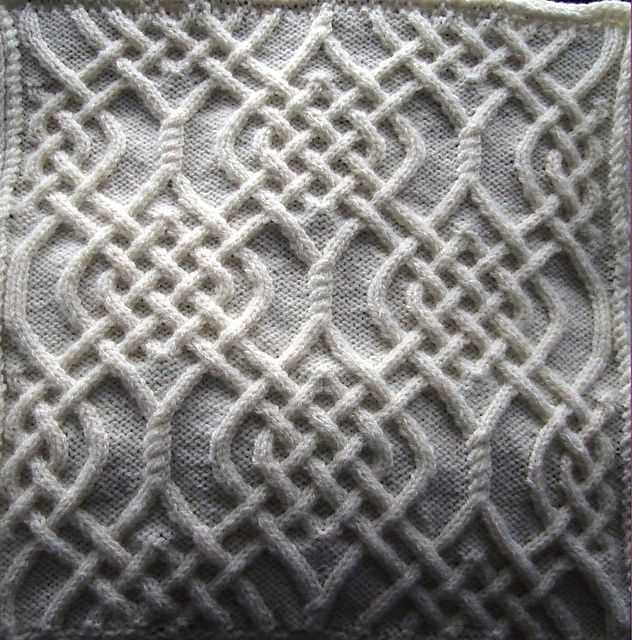
While traditional Celtic knot designs are beautiful in their own right, there is also room for creativity and personalization when adapting them into knitting patterns. Consider incorporating different stitch patterns or textures to add depth and dimension to your knitted knots. Experiment with different color combinations to create stunning visual contrasts and bring the knotwork to life.
When working on a Celtic knot knitting pattern, it is important to pay attention to the interconnectedness of the loops. Each loop needs to seamlessly flow into the next, mimicking the continuous flow of the knotwork. With a little practice and patience, you can successfully capture the beauty and intricacy of Celtic knot designs in your knitting projects. Whether you choose to create scarves, blankets, or even sweaters, your finished pieces will showcase the timeless elegance of Celtic knotwork.
Selecting the Perfect Project for Your Celtic Knot Knitting Pattern
Once you’ve chosen your Celtic knot knitting pattern, it’s time to decide on the perfect project to showcase your skills and creativity. With so many options available, it can be overwhelming to determine the best choice. Here are some factors to consider when selecting the perfect project for your Celtic knot knitting pattern.
1. Complexity: Evaluate your skill level and choose a project that matches your knitting abilities. Some Celtic knot patterns may be more intricate and require advanced techniques, while others may be suitable for beginners. Consider the time and effort you are willing to invest in the project, and select one that provides the right level of challenge for you.
-
Beginner-Friendly Projects: If you are new to knitting or Celtic knot patterns, start with simpler projects like scarves, dishcloths, or headbands. These projects typically involve basic knitting stitches and are a great way to practice the Celtic knot pattern.
-
Intermediate to Advanced Projects: If you are an experienced knitter, you can take on more complex projects like sweaters, shawls, or blankets. These projects often incorporate more intricate Celtic knot patterns and may require additional techniques, such as knitting in the round or lace knitting.
2. Purpose: Consider the purpose of your project. Are you knitting for yourself or someone else? Are you looking for a decorative item or something practical? Understanding the purpose of your project will help you determine the best type of project to choose.
-
Accessories: If you are knitting for yourself or someone else who enjoys accessories, consider making items like hats, mittens, or cowls. These projects are not only functional but also allow you to showcase your Celtic knot pattern in a smaller and more portable format.
-
Home Decor: If you are looking to add a touch of Celtic charm to your home, consider knitting pillows, blankets, or wall hangings. These projects can serve as beautiful decorations and conversation pieces that highlight your Celtic knot pattern.
In conclusion, selecting the perfect project for your Celtic knot knitting pattern involves considering the complexity of the pattern and your skill level, as well as the purpose of your project. By evaluating these factors, you can choose a project that not only showcases your knitting skills but also aligns with your preferences and knitting goals. Whether you opt for a beginner-friendly scarf or a complex lace shawl, your Celtic knot pattern is sure to add a touch of elegance and intricacy to your knitting projects.
Q&A:
What is a Celtic knot knitting pattern?
A Celtic knot knitting pattern refers to a design used in knitting that incorporates interlocking lines and loops, inspired by traditional Celtic artwork. The pattern creates a knot-like effect, with no clear beginning or end.
Can beginners knit a Celtic knot pattern?
While knitting a Celtic knot pattern may require a certain level of knitting skill and experience, beginners can still attempt it with some practice and guidance. Starting with simpler knot designs and following step-by-step instructions can help beginners learn and master this technique.
What types of projects can be made using Celtic knot knitting patterns?
Celtic knot knitting patterns can be used to create various projects such as scarves, blankets, sweaters, hats, and accessories like mittens and headbands. These patterns add a unique and intricate aesthetic to the finished item.
Where can I find Celtic knot knitting patterns?
There are several sources where you can find Celtic knot knitting patterns. Online platforms, knitting books, and knitting magazines often offer a wide range of Celtic knot patterns to choose from. You can also find free patterns on knitting blogs and websites.
Can I modify a Celtic knot knitting pattern?
Yes, you can modify a Celtic knot knitting pattern to suit your preferences or the specific project you are working on. You can adjust the size, add or remove elements, or change the colors to make the pattern more personalized.
What is a Celtic knot knitting pattern?
A Celtic knot knitting pattern is a knitting design that incorporates traditional Celtic knotwork motifs. These intricate patterns feature interlocking loops and knots, often symbolizing eternal love or interconnectedness. They are commonly used to create beautiful and unique garments, such as sweaters, scarves, and blankets.